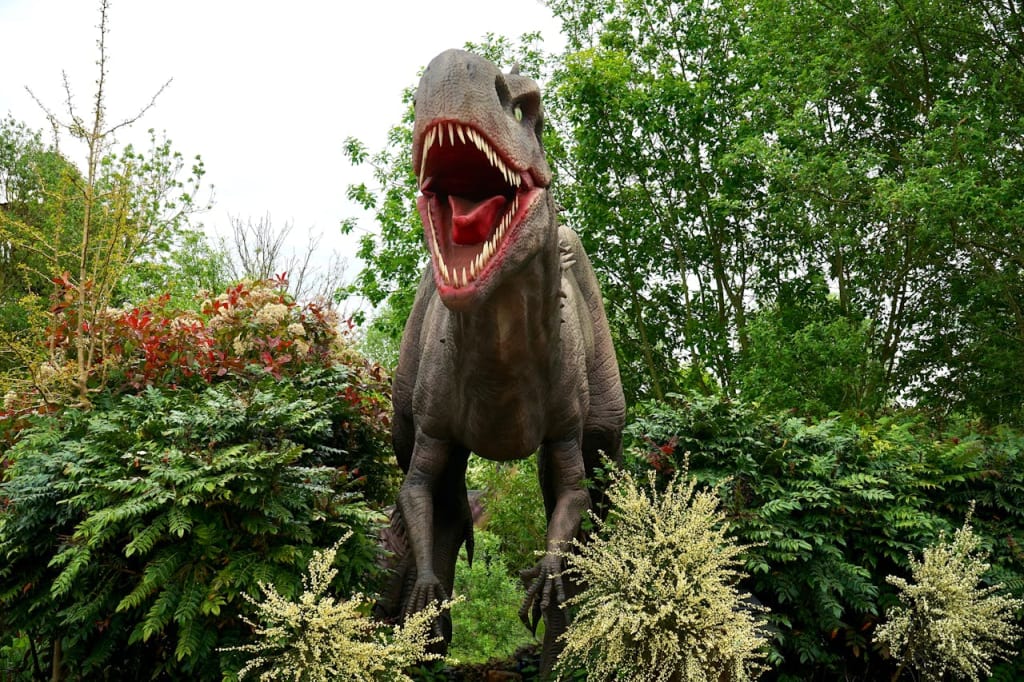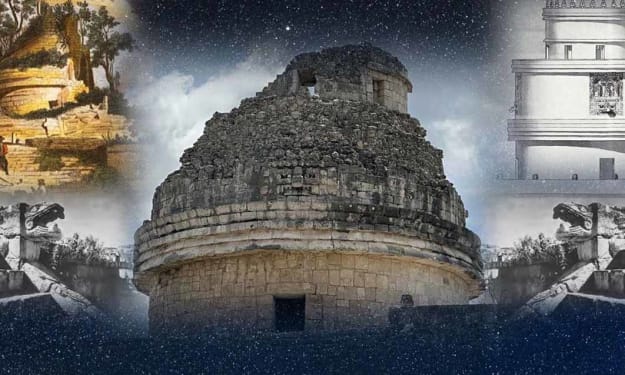
In the lush and ancient expanse of prehistoric Earth, a time known as the Mesozoic Era, dinosaurs roamed the land, soared through the skies, and swam in the seas. This incredible span of geological history, spanning from approximately 252 to 66 million years ago, is divided into three periods: the Triassic, Jurassic, and Cretaceous. Let me take you on a journey through this remarkable epoch, where giants ruled and the world was vastly different from what we know today.
The Triassic Period:
Our journey begins in the Triassic Period, around 252 million years ago. Earth was still in the grips of the aftermath of the Permian-Triassic extinction event, the most devastating mass extinction in the planet's history. Despite the desolation, life found a way to rebound, paving the path for the rise of the dinosaurs.
In the swamps and forests of the Triassic, early dinosaurs such as Eoraptor and Herrerasaurus emerged as the dominant terrestrial predators, while small reptiles and early mammals scurried about in the underbrush. Pterosaurs, the first vertebrates to evolve powered flight, soared overhead, their membranous wings cutting through the ancient air.
The Jurassic Period:
As we venture into the Jurassic Period, approximately 201 million years ago, we find ourselves in a world dominated by giants. Massive sauropods like Brachiosaurus and Diplodocus roam the verdant plains, their long necks reaching high into the canopy to browse on lush foliage. Stegosaurus, with its distinctive plates and spiked tail, lumber through the forests, while agile predators like Allosaurus and Ceratosaurus hunt among the herds.
In the skies, the skies are ruled by magnificent creatures like Pteranodon and Dimorphodon, their leathery wings catching the warm currents as they glide in search of prey. Beneath the waves, marine reptiles like Plesiosaurs and Ichthyosaurs navigate the ancient seas, their sleek forms adapted for life in the water.
The Cretaceous Period:
Our journey culminates in the Cretaceous Period, approximately 145 million years ago, a time of both immense diversity and profound change. The continents drift and shift, forming new landscapes and habitats, while the climate fluctuates, shaping the evolution of life on Earth.
On land, the dinosaurs continue to thrive and diversify. Tyrannosaurus rex, the infamous king of the dinosaurs, stalks the forests and plains, its massive jaws capable of crushing bone with ease. Triceratops, with its three-horned face and frilled neck, defends itself against predators with formidable horns and a powerful beak. Meanwhile, herds of hadrosaurs like Parasaurolophus and Edmontosaurus roam the open plains, their distinctive crests and duck-bills adapted for grazing on tough vegetation.
In the skies, the skies are patrolled by giant pterosaurs like Quetzalcoatlus, the largest flying animals to ever exist, their wingspans stretching up to 10 meters or more. Beneath the waves, marine reptiles like Mosasaurs and Plesiosaurs rule the oceans, their streamlined bodies and razor-sharp teeth making them formidable predators.
The End of an Era:
But even as the dinosaurs reach the pinnacle of their success, dark clouds gather on the horizon. Around 66 million years ago, a catastrophic event, likely triggered by a massive asteroid impact, brings an end to the reign of the dinosaurs. The ensuing devastation, including massive wildfires, tsunamis, and a global winter, leads to the extinction of more than 75% of all species on Earth, including the dinosaurs.
In the aftermath of this cataclysm, the world is forever changed. The once-dominant dinosaurs are replaced by mammals, who rapidly evolve to fill the ecological niches left vacant by their extinct predecessors. The age of the dinosaurs may be over, but their legacy lives on in the form of birds, the only surviving descendants of these ancient reptiles.
As we journey back to the present day, we carry with us the echoes of a world lost to time, a world where giants roamed the land and the skies were filled with creatures beyond imagining. The Mesozoic Era may be a distant memory, but its impact on the world we inhabit today is undeniable, shaping the course of evolution and inspiring wonder and fascination in all who seek to uncover its secrets.
About the Creator
Enjoyed the story? Support the Creator.
Subscribe for free to receive all their stories in your feed. You could also pledge your support or give them a one-off tip, letting them know you appreciate their work.






Comments
There are no comments for this story
Be the first to respond and start the conversation.